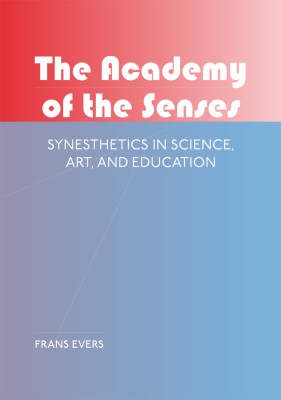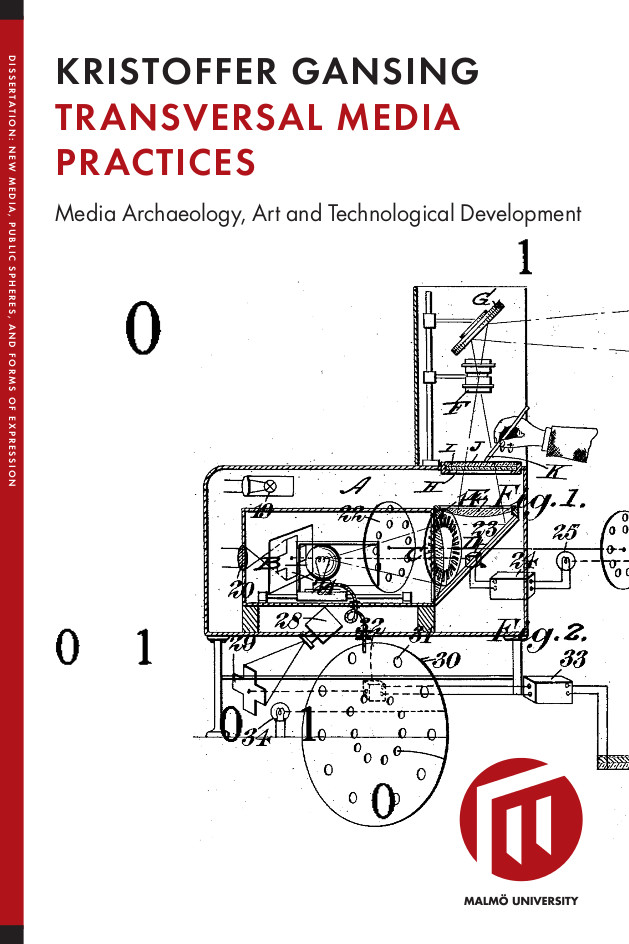Frans Evers: The Academy of the Senses: Synesthetics in Science, Art, and Education (2012)
Filed under book | Tags: · art and science, art education, art history, education, electronic music, media art, remediation, science, sound, synaesthesia, theatre

“Frans Evers’s The Academy of the Senses is a book wanting to be three books at once. A study of the scientific approaches to synesthesia, related to the psycho-physical research conducted by Evers during his studies at the university; an alternative art history of the twentieth century based on the double paradigm of Castel’s clavecin oculaire and Wagner’s Gesamtkunstwerk; and a full account of the genesis of the Interfaculty Image & Sound. To encompass this entire range of subject, Evers coined a new term, “synesthetics,” to denote the experience, creative force, and study of synesthesia.
Throughout his career, Evers profiled himself as an educational reformer. Together with electronic music pioneer Dick Raaijmakers, he started a series of projects and lectures exploring the interaction of music and fine arts, which culminated in the establishment of the first multimedia department in the Netherlands, the Interfaculty Image & Sound at the University of the Arts in The Hague, which Evers headed from 1989 until 2007. This book maps out the theoretical and artistic foundations of this educational reform project, as well as its synesthetic output: large multi-media performances such as a reworking of Anton Schoenberg’s Die Glückliche Hand, Mondrian’s Promenoir, and Scheuer im Haag.
The Academy of the Senses is a “source book,” a work of inspiration, rather than a rigid account of historical facts. It provides anyone with an interest in the wondrous realm of multimedia arts and synesthesia as a creative force, whether student or professional, an introduction into the foundations and extensions of seeing sound and hearing colors throughout the centuries.”
Compiled and edited by Vincent W.J. van Gerven Oei
Publisher ArtScience Interfaculty Press, University of the Arts, The Hague, 2012
ISBN 9789461908193, 9461908199
298 pages
via editor
Review: Matteo Marangoni (Neural, 2013).
PDF (19 MB)
Comment (0)Kristoffer Gansing: Transversal Media Practices: Media Archaeology, Art and Technological Development (2013)
Filed under thesis | Tags: · art, artistic research, imagination, media archeology, media art, new media, overhead projector, remediation, technology, television, transversality

“Transversal Media Practices work across specific situations of technological development, critically examining and redefining the terms of production in different media by bringing heterogeneous histories, institutions, actors and materialities into play with one another. This dissertation is all about trying out and refining the methodologies of such transversal media practices, in the end outlining a conceptual set of tools for further development.
Following the technological hype of the “digital revolution” of the mid-1990s, the field of new media studies gained popularity over a ten year period. This dissertation takes its cue from a historical turn in new media theory, and argues that it is time leave behind strict polarisations between old and new as well as analogue and digital. The study unfolds through two case-studies. The first, “The World’s Last Television Studio”, looks at tv-tv, an art and media-activist project that negotiates the sociocultural and material changes of the “old” and institutionalised mass medium of television. In the second case study, “The Art of the Overhead”, another old medium is engaged: the overhead projector – a quintessential 20th century institutional medium here presented as a device for rethinking the new through the old. The problematic of technological development, i.e. dealing with questions of how (media) technologies develop over time, forms the background to these two case studies. A key issue being how cultural and artistic practices dealing with the interaction of old and new media invite us to conceptualise technological development in new ways.
The emerging field of media archaeology is employed as a methodology in media studies and cultural production, comprising a theoretical and applied analysis of media history, materiality and practice. This transversal approach allows media archaeologists to deal with the relation between the old and the new in a non-linear way as well as to pay attention to the technical materiality of media. It is argued that the transversality of the media-archaeological approach should be seen in contrast to other conceptions of media history and technological development, such as progressivist, mono-medial and evolutionary ones. In this study, the author tries out the potential of media archaeology to reform our conception of media technologies, and eventually formulates a set of concepts for thinking and doing media archaeology as a transversal media practice. These tools are about the imaginary, residual and renewable dimensions of media technologies and are meant to assist in the opening up and intervening into processes of standardised media development.
On a general level the resulting set of tools for transversal media practices builds a bridge between theory and practice: they can be used for further research and cultural analysis where objects of study speak back to analytical concepts. At the same time these are tools for transversality that expand this form of cultural analysis in that the travelling between disciplines here also means a travelling between theory and practice. On a specific level, the tools enable this travel between theory and practice in media- and communication studies, and as such they contribute to the development of new practice-based methodologies in media research.”
Doctoral dissertation in Media and Communications Studies
School of Arts and Communication, K3; Faculty of Culture and Society; Malmö University
Dissertation series in New Media, Public Spheres and Forms of Expression
Creative Commons Attribution-NonCommercial 3.0 Unported License
ISBN 9789171044815
350 pages
Publisher
Media archaeology on Monoskop wiki (incl. source bibliography)
PDF, PDF (updated on 2025-11-25)
Comments (3)Richard Grusin: Premediation: Affect and Mediality After 9/11 (2010)
Filed under book | Tags: · affect, mass media, media, mediality, memory, preemption, remediation, security

The terrorist attacks of 11 September 2001 have been called the world’s first live global media event. Responding to the immediacy and collective shock produced by live coverage of the collapse of the Twin Towers, print, televisual, and networked media have become obsessed with the pre-mediation of potential futures.
In an era of heightened securitization, US and global media have attempted to prevent a recurrence of such media trauma by ensuring that no future will be able to emerge into the present that has not already been premeditated in the past. Socially networked US and global media work to premediate collective affects of anticipation and connectivity, while also perpetuating low levels of apprehension or fear.
Following up on the groundbreaking work of media theory Remediation: Understanding New Media, Grusin develops the logic of premediation in terms of such concepts as mediality, the affective life of media, and the anticipation of security.
Publisher Palgrave Macmillan, 2010
ISBN 0230242529, 9780230242524
240 pages
review (Jussi Parikka, Leonardo)
Comment (0)
